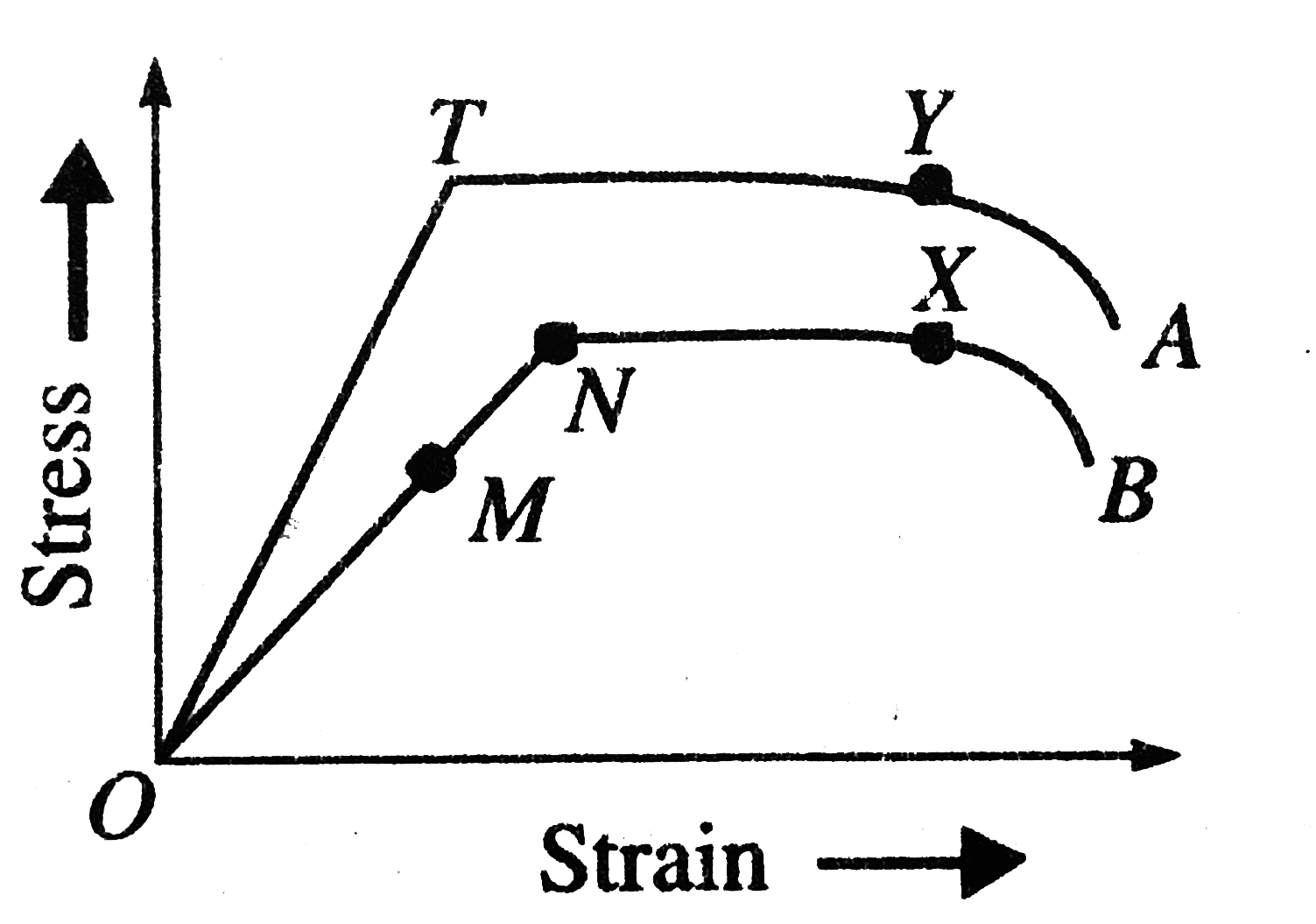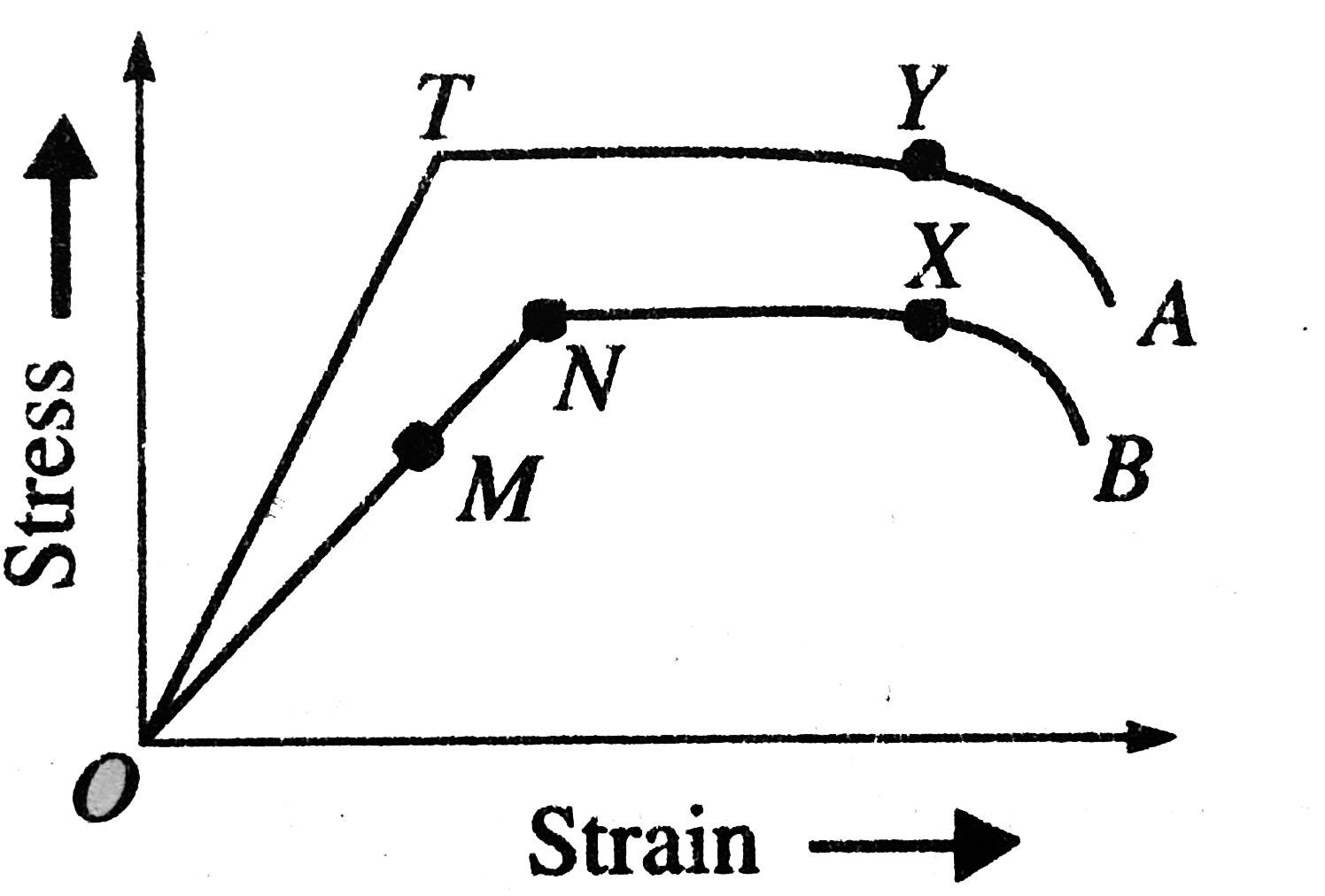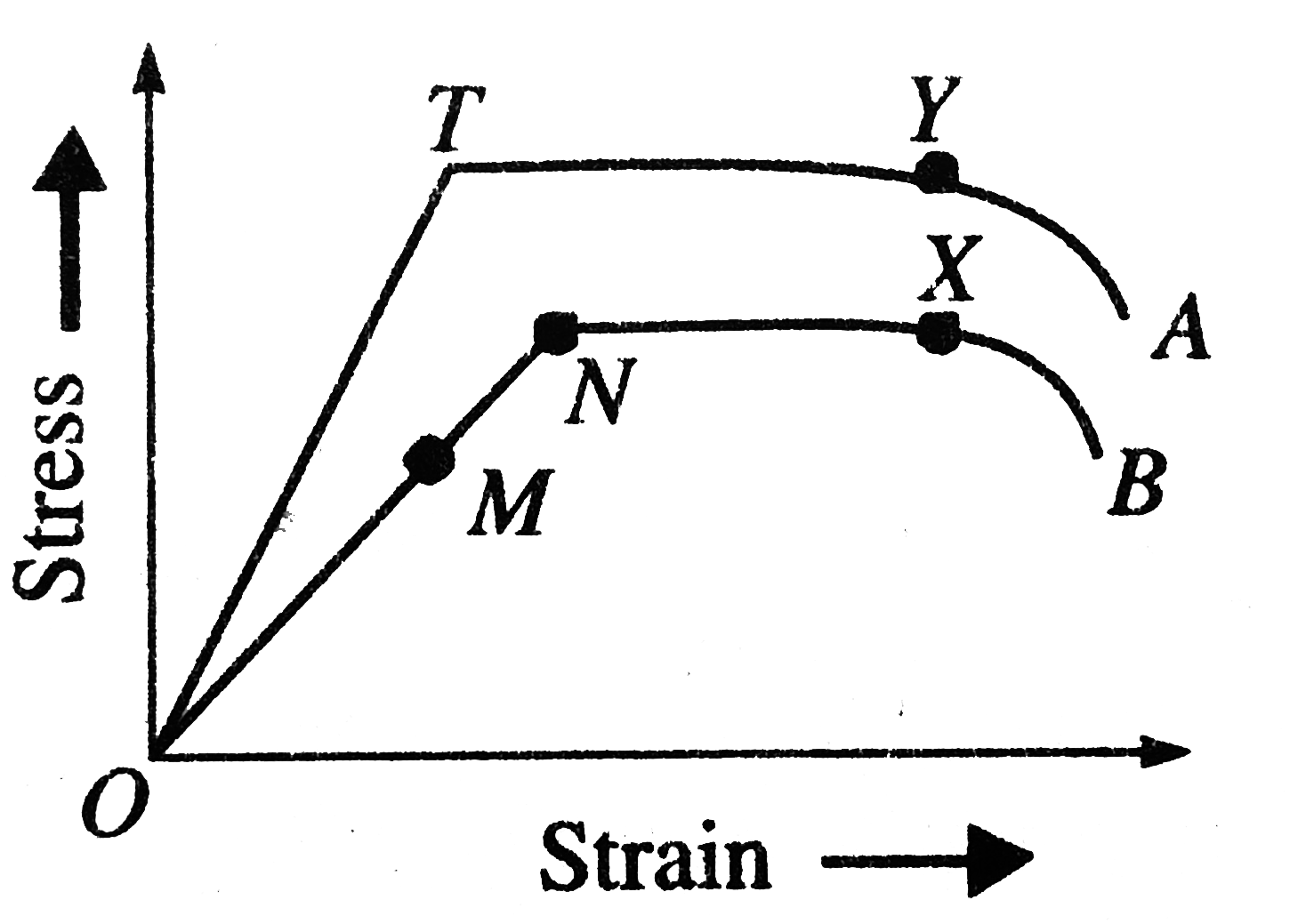Why is any metallic part of a machinery never subjected to a stress beyond the elastic limit ?
Step-by-Step Solution:
1. Understanding the Elastic Limit: The elastic limit is the maximum stress that a material can withstand without undergoing permanent deformation. When stress is applied within this limit, the material will return to its original shape once the stress is removed.
2. Stress-Strain Curve: The relationship between stress and strain for materials, particularly metals, can be represented by a stress-strain curve. Initially, the curve is linear, indicating that the material behaves elastically. The point at which the curve starts to deviate from linearity is known as the yield point, which corresponds to the elastic limit.
3. Consequences of Exceeding the Elastic Limit: If a metallic part is subjected to stress beyond the elastic limit, it enters the plastic region of the stress-strain curve. In this region, any increase in stress will lead to permanent deformation. For example, if a wire is stretched beyond its elastic limit, it will not return to its original length when the load is removed.
4. Importance in Machinery: Machinery is designed to operate under specific loads and stresses. If any part of the machinery is subjected to stress beyond its elastic limit, it can lead to permanent deformation, which can compromise the integrity and functionality of the machine. This can result in mechanical failure, increased wear, and ultimately, costly repairs or replacements.
5. Conclusion: To ensure the longevity and reliability of machinery, it is crucial to keep the stress on metallic parts within the elastic limit. This prevents any permanent deformation and ensures that the machinery operates efficiently and safely.
Topper's Solved these Questions
- Mechanical Properties of SolidsBOOK - SL ARORACHAPTER - Mechanical Properties of SolidsEXERCISE - Example
113 Videos
- Mechanical Properties of fluidsBOOK - SL ARORACHAPTER - Mechanical Properties of fluidsEXERCISE - Exercise
459 Videos
- MECHANICSBOOK - SL ARORACHAPTER - MECHANICSEXERCISE - Exercise
341 Videos
Similar Questions
TRUE/FALSE TYPE QUESTIONS Any metallic part of a machinery is never subjected to a stress beyond the elastic limit of the material.
View SolutionAssertion : The materials which have very small range of plastic extension are called brittle material.
Reason: If the stress is increased beyond the elastic limit, the material will break.
View Solution
Knowledge Check
On applying external force beyond the elastic limit,
Ano effect is produced on the materialBpermanent deformation of the object is causedCdeformation is zeroDmatter is liquifiedThe metal which do not break beyond elastic limit is
AductileBbrittleCboth 'a' and 'b'DplasticThe property of metals where by they could be drawn into thin wires beyond their elastic limit without breaking is
AductiliyBmalleabiltyCelasticityDhardness
The shape of stress vs strain graph within elastic limit is :
View SolutionMaterials get deformed when force is applied. Some of them regain their status when the applied force is removed. They are termed as elastic. Those of which not regaining are called plastic. There may be delay in the regaining in some materials. They are said to have got elastic aftereffect, since they have gone beyond the elastic limit. Repeated application and removal of force leads to fatigueness in the material. Fatigued materials may break at any point time and so are avoided.
The stress strain graph for two materials A and B is shown in the following figure:

The time in which the two materials regain their original status is tA and tB related as tB=2tB. Then the material under elastic aftereffect (relatively) is
View SolutionMaterials get deformed when force is applied. Some of them regain their status when the applied force is removed. They are termed as elastic. Those of which not regaining are called plastic. There may be delay in the regaining in some materials. They are said to have got elastic aftereffect, since they have gone beyond the elastic limit. Repeated application and removal of force leads to fatigueness in the material. Fatigued materials may break at any point time and so are avoided.
The stress strain graph for two materials A and B is shown in the following figure:

If the intensity of A and B is EA and EB, respectively
View SolutionMaterials get deformed when force is applied. Some of them regain their status when the applied force is removed. They are termed as elastic. Those of which not regaining are called plastic. There may be delay in the regaining in some materials. They are said to have got elastic aftereffect, since they have gone beyond the elastic limit. Repeated application and removal of force leads to fatigueness in the material. Fatigued materials may break at any point time and so are avoided.
The stress strain graph for two materials A and B is shown in the following figure:

The strength of the material A and B is SA and SB, respectively, while the longevity of plastic behaviour is LA and LB. Then
View SolutionThe property of metals which allows to form a thin wires beyond their elastic limit without rupture is
View Solution
